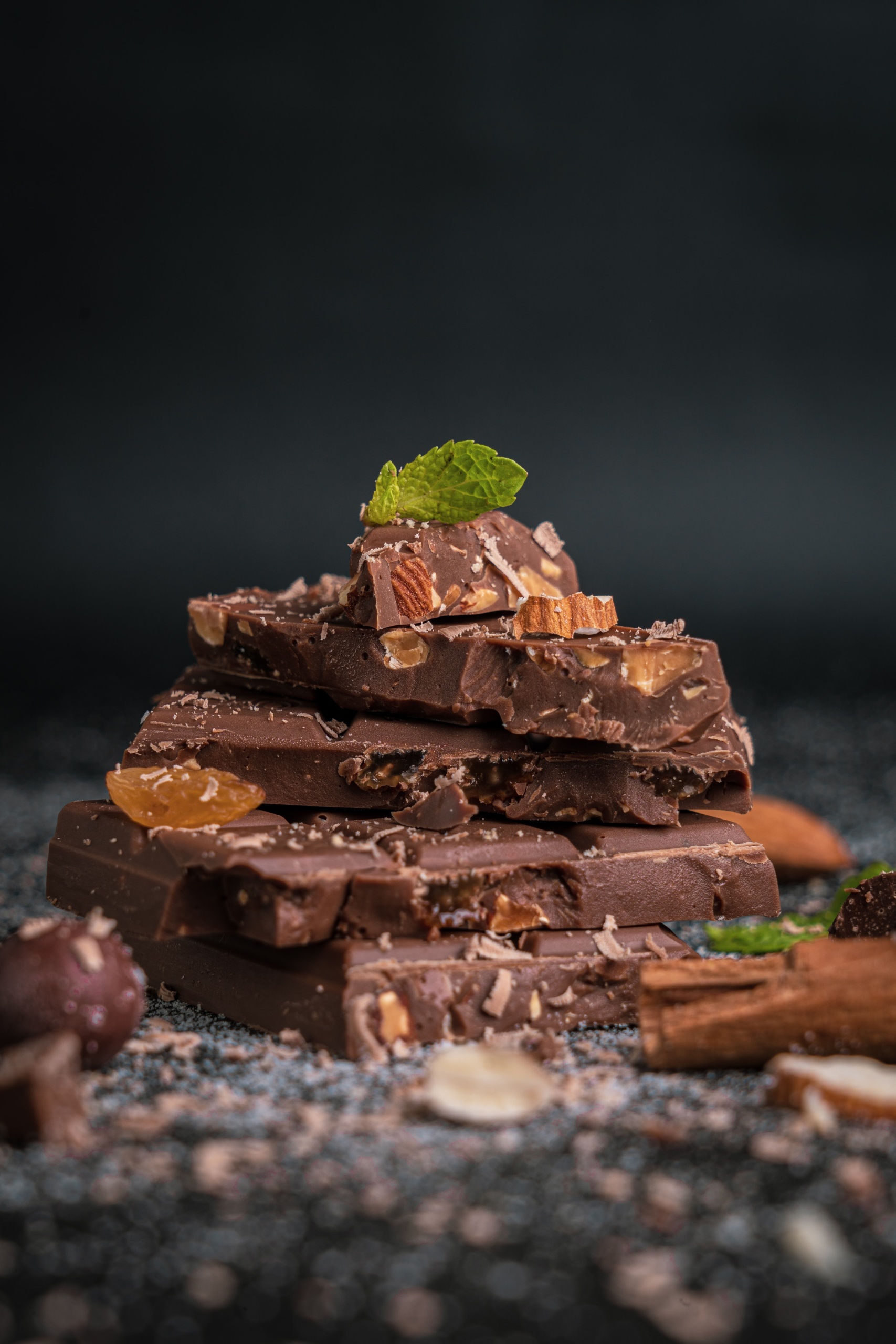For a lot of us, chocolate is more than just a dessert. Chocolate is a mood booster, a reward at the end of a hard day, and even a special gift for many occasions. People also often choose dark chocolate over milk chocolate for its purported health benefits, including a rich antioxidant profile and the potential to improve heart health and other conditions. Dark chocolate is often seen as the healthier chocolate of choice, but there is actually a darker side to this “healthier” chocolate. According to studies, some dark chocolate bars contain cadmium and lead, two heavy metals related to a variety of health issues in children and adults. The chocolate business has been attempting to find ways to reduce those levels. Consumer Reports scientists recently measured the amount of heavy metals in 28 dark chocolate bars to see how much of a danger these popular treats pose. Cadmium and lead were found in all of them.
Heavy Metals in Dark Chocolate
Consumer Reports (CR) tested a wide variety of brands, ranging from smaller companies to more familiar brands like Ghirardelli and Dove. For 23 of the bars tested, CR found that consuming just one bar daily would put an adult over the level that public health officials have deemed safe for either lead or cadmium. For five of the bars, their lead and cadmium levels were both over the safe amount for human consumption.
Long-term exposure to even trace amounts of heavy metals can cause a range of health issues. According to Tunde Akinleye, the CR food safety expert who led this testing project, the danger is greatest for pregnant women and young children because the metals can cause developmental problems, impact brain development, and lead to lower IQ. Even so, there are still risks for people of any age. In adults, for example, chronic lead exposure can cause nervous system problems, hypertension, immune system suppression, kidney harm, and reproductive issues. According to market research company Mintel, while most people do not consume chocolate on a daily basis, 15% do. Even if you don’t eat a lot of cocoa, lead and cadmium can be a problem. It can also be found in a variety of other foods, including sweet potatoes, spinach, and carrots, and small amounts from numerous sources can add up to dangerous levels. That is why, whenever possible, restrict your exposure.
Although this sounds scary, this doesn’t mean you have to give up chocolate completely. Although most of the chocolate bars tested had concerning levels of heavy metals in them, five of the bars on the list were low in both lead and cadmium. This proves that it is more than possible for companies to create chocolate products with lower levels of heavy metals and for chocolate connoisseurs to find safer products they can still enjoy.
The Dark Side of Cacao
The cacao bean is used to make chocolate, which contains two primary components: cocoa solids and cocoa butter. These are referred to collectively as chocolate or cocoa.
The cocoa solids are primarily responsible for dark chocolate’s reputation as a reasonably healthy treat. These are high in flavanols, which are antioxidants that have been related to better blood vessel function, reduced inflammation, and lower cholesterol. Dark chocolate has less sugar and more fiber than milk chocolate, as well as calcium and potassium. Unfortunately, heavy metals, particularly cadmium, can be found in cocoa solids. As a result, weighing the risks and advantages of dark chocolate can be difficult.
Some of the same concerns may apply to products made with cocoa powder, which is essentially pure cocoa solids, such as hot cocoa and brownie and cake mixes, even though the amounts of cacao and potentially heavy metals differ. Dark chocolate contains more heavy metals than milk chocolate due to its greater cacao content. There is no formal cutoff, but dark chocolates should contain at least 65 percent cacao by weight, according to Michael J. DiBartolomeis, PhD, a toxicologist and former California Department of Public Health official who has studied heavy metals in chocolate.
How to Reduce the Levels of Lead and Cadmium in Chocolate
To make matters more complicated, lead and cadmium appear to enter cacao in different ways, requiring a different sort of fix, according to DiBartolomeis. He and other researchers examined how metals might contaminate cacao between 2019 and 2022 as part of a settlement to a lawsuit against chocolate makers brought by As You Sow, an organization that advocates for corporate responsibility. As You Sow earlier discovered high levels of lead and cadmium in certain chocolates.
The researchers discovered that cacao plants absorb cadmium from the soil, which accumulates in cacao beans as the tree develops. Heavy metals contaminate other meals in the same way. However, lead appears to enter cacao after the seeds are harvested. The metal was discovered on the outer shell of the cocoa bean, not in the bean itself, according to the researchers. Furthermore, lead levels were low immediately after beans were picked and removed from pods but rose over the course of several days as beans dried in the sun. Lead-laden dust and dirt collected on the beans during this period. “We collected beans on the ground that had a lot of lead on the outside,” DiBartolomeis explains.
Because cadmium and lead enter cocoa in various ways, addressing the contamination necessitates a variety of approaches. Changes in harvesting and manufacturing methods will be required to remove lead, according to Danielle Fugere, president of As You Sow. Such practices could include minimizing soil contact with beans while they are lying in the sun and drying beans on tables or clean tarps away from roads or with protective covers, so lead-contaminated dust does not fall on them. Another option, according to Fugere, is to discover methods to remove metal contaminants when beans are cleaned in factories.
Solving for cadmium is more difficult, but it is feasible, according to DiBartolomeis. Plants can be carefully bred or genetically engineered to absorb less heavy metal, but this could take several years. Other choices include replacing older cacao trees with younger ones since cadmium levels tend to rise as the plants age and removing or treating cadmium-contaminated soil.
How to Make Chocolate Safer
DiBartolomeis suggests that chocolate makers survey cacao-growing areas to determine cadmium levels and prefer beans from areas with lower levels. If necessary, they should blend beans from higher-cadmium regions with beans from lower-cadmium areas, as some manufacturers are already doing. Alex Whitmore, CEO of Taza, which produces one of the products with lower levels of both metals in CR’s tests, says that’s exactly what his company does, blending beans from “different origins to ensure that the final product” has lower levels. According to the National Confectioners Association, which funded the heavy metals research in chocolate as part of the As You Sow settlement, “lead reductions can be expected within the first year of implementing new handling practices,” though lowering cadmium may take longer.
Taking measures to reduce heavy metals in cacao can have the following benefits: After all, CR’s test results demonstrate that, while heavy metal contamination is common, it is not unavoidable. Other steps, in addition to selecting products with lower levels of lead and cadmium, can help minimize the risks. In reality, DiBartolomeis says that while he warns pregnant women and children against eating dark chocolate, he doesn’t advise most people to avoid it entirely, just to be aware of the risks and not overdo it.




